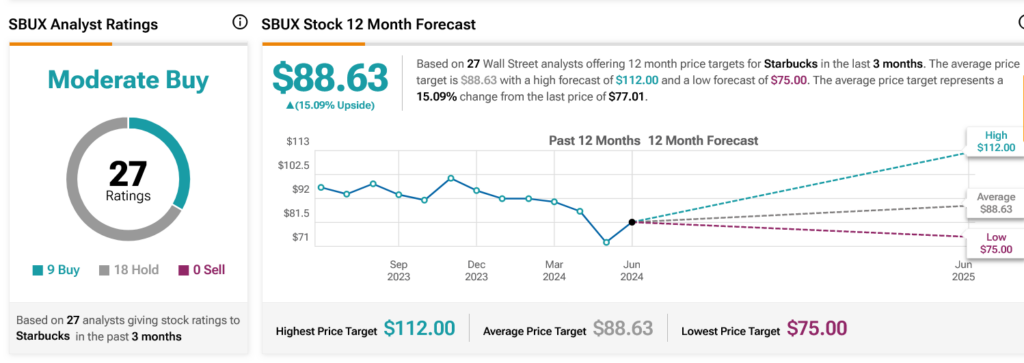
Starbucks Corporation, the world's largest coffeehouse chain, is implementing several measures to improve its stores and boost sales in its two major markets: the US and China. In response to a challenging operating environment that has led to flat revenues and declining comparable store sales in both regions, Starbucks is focusing on product innovation, operational improvements, and expanding digital capabilities.
In the US market, Starbucks plans to launch new products such as pistachio lattes and a new core iced shaken espresso to capture unmet overnight and weekend demand. The company also aims to improve its performance by meeting demand across dayparts, using technology to enhance customer service, and increasing store count by approximately 4% for the year.
In China, Starbucks is offering more coffee forward, locally relevant product innovations while making significant investments to improve omnichannel capabilities. The company also plans to increase the percentage of new store openings in lower tier markets and new county cities where it sees stronger new store economics.
Despite these efforts, Starbucks faces criticism for commoditization and underperforming iced energy drinks. Additionally, labor troubles have arisen due to food waste issues with live pastry displays. However, the implementation of the Siren Craft System in over 10% of its stores has shown promising results in reducing bottlenecks and improving service times.
Starbucks reported disappointing second quarter results with US same-store sales falling 3% and traffic dropping 7%. The company cut its 2024 outlook, citing a tough macroeconomic environment and fewer visits from occasional customers. Despite these challenges, Starbucks remains committed to improving its operations and meeting the evolving needs of its customers in both the US and China markets.






